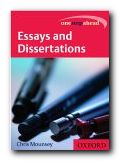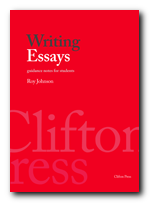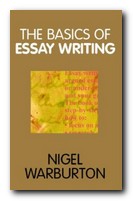this shows what a first class essay looks like
This first class essay is piece of work was produced on a third-year undergraduate course which considers Modern Literature and Literary Theory. Students are required to examine texts from different genres in the light of critical theory. In this case it is theories about the relationship between literature and history. As in many questions set at this level, the student is being asked to respond to a quotation from citical commentary on the topic. The essay is in full copyright of its author, to whom thanks for permission to reproduce it here are due.
Question
‘The poetic act both anticipates the future and speeds its coming’ (Czeslaw Milosz, ‘On Hope’ The Witness of Poetry, Cambridge, Mass: Harvard University Press, 1983).In what ways could texts which deal with the past be said to be anticipating a future? Discuss with reference to at least one poetry text, and one text from a different genre.
Every literary text is both written and received in a particular historical context. In this sense all literary texts are historical. However some texts deliberately foreground history by explicitly engaging with a given period, or by referring to specific historical events. Anna Akhmatova and J.G. Ballard are writers who have consciously chosen to address the past, and yet, in doing so, have also prefigured the future.
In ‘Requiem’ (1) Akhmatova expresses her need to preserve the memories of the horror of life during the Stalinist reign of terror, as a way of issuing a warning about the future. She herself lived through the events depicted, and the poem represents her personal testimony, ‘I stand as witness to the common lot, / survivor of that time, that place.’ (p.54) Akhmatova also makes clear the fact that she faced opposition from those in authority, who attempted, through censorship, to prevent such remembrance. However her determination to commemorate the suffering that she and others like her endured, is explicit in the Epilogue:
I want to name the names of all that host,
but they snatched up the list, and now it’s lost.
I’ve woven them a garment that’s prepared
out of poor words, those that I overheard,
and will hold fast to every word and glance
all of my days, (p.61).
Her feelings are shared by many writers who have witnessed or experienced traumatic circumstances and feel that drawing attention to them is a way of trying to prevent their reoccurrence. Dennis Walder, in a paraphrase of the writing of Gunter Grass, explains it as ‘an urgency to recall a specific past in order to say something to the present – and to the future’.(2)
‘Requiem’ is a group of poems written over a period of years in which Akhmatova highlights various periods in her life and in the life of her country. She compares her situation to that of ‘the wives of Peter’s troopers’ whose soldier husbands were executed in 1698. One effect of referring to a comparable event over two hundred years earlier, is to demonstrate that the ‘Yezhov terror’ is far from being Russia’s first experience of tyranny. The implication is that it may not be the last. As Joseph Brodsky states, ‘She sensed that history, like its objects has very limited options’.(3) Hence the sense of desperation in her wish to communicate the horror of an event which, in the words of Primo Levi, ‘happened, therefore it can happen again’.(4)
As a poet, rather than a historian, Akhmatova is perhaps better able to express the suffering and emotions of her people, albeit subjectively. By concentrating on grief and affliction rather than clinical facts, she increases the memorability of her subject matter. As Joseph Brodsky states, ‘At certain periods in history it is only poetry that is capable of dealing with reality by condensing it into something graspable, something that otherwise couldn’t be retained by the mind’.(5) The poem’s imagery conveys the way in which suffering produces feelings of numbness. Its ability to ‘turn heart into a stone'(p.58), seems to be necessary for people to survive. The same imagery is used to portray the dehumanizing effect of oppression, with people metaphorically depicted as stone: ‘how suffering inscribes on cheeks / the hard lines of its cuneiform texts,'(p. 60). This theme continues in the epilogue when, in a proleptic reference, Akhmatova anticipates her own symbolical reification. She envisions a statue erected in her memory, ‘I should be proud to have my memory graced / but only if the monument be placed / …here, where I endured three hundred hours'(p.61). This prefiguration is also an anticipation of a possible end to the anguish, as symbolized by the image of ‘melting snow’.(p.61)
Despite the fact that the poem consists of a number of small segments, likened to the musical form of a requiem, the religious imagery forms a continuum. It also serves to set the poem in a wider context, and is another example of the way in which Akhmatova anticipates a better future. The section of the poem entitled ‘Crucifixion’, is particularly rich in religious imagery and contains a near quotation from the Russian Orthodox Easter service, ‘Do not weep for me, Mother, / When I am in my grave’ (p.59). Akhmatova’s direct comparison of her situation with the crucifixion and Easter, indirectly implies an anticipation of the resurrection, and thus expresses a glimmer of hope for the future. This is taken a step further with an apocalyptic prophesy ‘A choir of angels glorified the hour, / the vault of heaven was dissolved in fire.’ (p.59). As book of Revelation suggests that following the Apocalypse there will be no more suffering or death, the allusions to it are again a way of tentatively intimating a sense of optimism about the future. The poem ends with a reference to ‘a prison dove’, an image which fuses the Christian symbol of peace and freedom with persecution and imprisonment. This exemplifies the way in which, throughout the poem, Akhmatova balances the wish to commemorate horror, with a simultaneous attempt to anticipate peace.
Empire of the Sun is a novel based upon events in the past, witnessed by its author during his childhood. In the preface, Ballard explains the relationship between the narrative and known historical facts, ‘For the most part this novel is based on events I observed during the Japanese occupation of Shanghai and within the camp at Lunghua’.(6)
Like Akhmatova, Ballard is concerned with memory, and how memories of the past can affect the present and the future. As such, Empire of the Sun contains his personal testimony. Despite the fact that the novel is clearly a work of fiction, there is an obvious autobiographical feel about it; the main protagonist shares the name of the author and there are frequent references to verifiable events. As Laurence Lerner explains, ‘The world of fiction is not purely imaginary, but overlaps with the world of history; in the case of realistic fiction, the overlap is especially large, and welcomed.’ (7) This ‘overlap’, caused by the inclusion of a wealth of legitimate facts, gives a sense of credibility to the fictional events that occur. This is exemplified by a sentence from the beginning of the novel in which fictional and verifiable events are juxtaposed, ‘After morning service on Sunday, 7 December, the eve of the Japanese attack on Pearl Harbour, the choirboys were…marched down to the crypt’ (p.11). The episode that the narrator relates may, or may not have actually happened, but is given an air of realism by its link with an established factual event.
In an interview, Ballard explained his gravitation towards the genre of science fiction, as being due to a desire to ‘write about the next five minutes and not the last thirty years’.(8) Empire of the Sun, is not a work of science fiction, and yet it is possible to see how, despite its engagement with the past, Ballard uses the narrative to speculate about the future. In particular the focus towards the end of the novel is concentrated on the possibility of a third world war. The narrative perspective of a young and somewhat traumatized boy, under the apprehension that the next war has already started, enables Ballard to heighten awareness of such a prospect. ‘If he saw his parents he would tell them that World War III had begun and they should return to their camp at Soochow’ (p.338).
Ballard’s preoccupation with the prospect of another war, reveals an ideology which relates to the prevailing political circumstances at the time in which the novel was written. The years preceding 1984 had been characterized by anxiety due to the events which surrounded the ‘Cold War’. Despite Jim’s limited perceptions and often simplistic interpretation of events, his prophetic remarks about future hostilities are lent credence by their feasibility and the conviction with which they are expressed, ‘these were trailers for a war that had already started. One day there would be no more newsreels.’ (p. 349); ‘One day China would punish the rest of the world, and take a frightening revenge’.(p.351) Although it is clear that these are Jim’s thoughts and opinions, they are reported by the narrator without elaboration or contradiction, which adds to their plausibility. Ballard’s choice of narrative mode, therefore contributes to the novel’s ability to arouse contemplation of future events.
By definition, the past is absent and yet language is able to make it accessible. Despite their differing emphasis and methodology, Akhmatova and Ballard have both produced texts which, in the words of Primo Levi ‘bear witness’.(9) In doing so they demonstrate the way in which recollections of specific past occurrences, can affect perceptions of the present and the future. In issuing warnings about the future and provoking its consideration, they are able, as Milozs suggests, to ‘anticipate the future’ and to ‘speed its coming’.(10)
Notes
1. Anna Akhmatova, ‘Requiem’, in The Poetry Anthology, The Open University (p.54). All subsequent references are to this edition.
2. Dennis Walder et al, Block 8 – Literature and History, The Open University (p.10).
3. Joseph Brodsky, ‘The Keening Muse’, Literature in the Modern World, The Open University (p.354). All subsequent references are to this edition.
4. Primo Levi, quoted by Dennis Walder, Block 8 – Literature and History, The Open University (p.10)
5. Joseph Brodsky (p.357).
6. J.G. Ballard, from the preface to Empire of the Sun, Flamingo (1994)
All subsequent references are to this edition.
7. Laurence Lerner, ‘History and Fiction’ from Literature in the Modern World, The Open University (p.337)
8. J.G. Ballard, taken from TV16, ‘The next five minutes : literature and history’, The Open University.
9. Primo Levi, quoted by Dennis Walder, Block 8 – Literature and History, The Open University (p.10)
10. Czeslaw Milosz, ‘On Hope’, Literature in the Modern World, The Open University (p.359.)
Bibliography
A319, Block 8 Literature and History.
A319, The Poetry Anthology.
TV16, ‘The Next Five Minutes: literature and history’.
Radio 16 ‘Poetry and History: Anna Akhmatova’.
Ballard J.G., Empire of the Sun, Flamingo (1994)
Copyright © Kathryn Smith
More on How-To
More on study skills
More on writing skills


